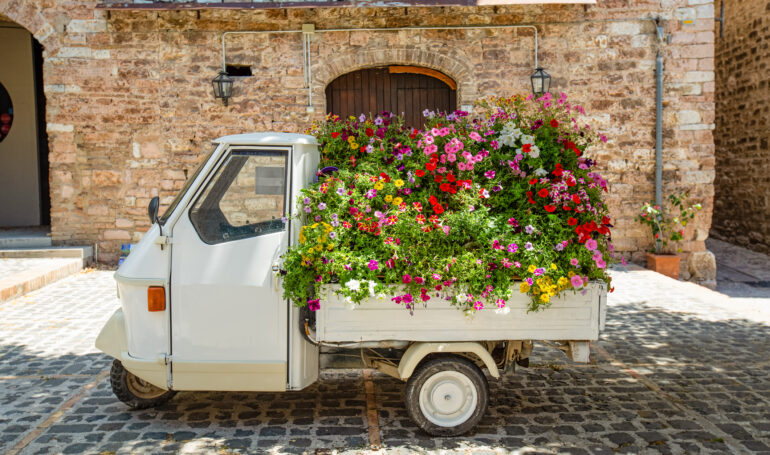
Your Guide to the Heart of Italy – Umbria
I have always had a particular fondness for the Italian region of Umbria. Umbria is called the heart of Italy, but it’s always been overshadowed by its far more famous neighbor, Tuscany. It often feels like Umbria is Tuscany’s less popular little sister. But this can be a blessing in disguise if you’re ready to leave mass tourism behind. Visiting Umbria means moving between green hills and medieval villages. Passing through some of the most beautiful hamlets in Italy, rich in spiritual places, natural beauty, and historical monuments. Not only that, but Umbria can boast mouth-watering gastronomic traditions. Did you know that the art of pork butchery and curing has its place here? Umbria is home to the most authentic flavors of pork products, mushroom truffles, oil, and wine.
Umbria is a magnificent place to discover during spring and fall, when it is possible to organize beautiful outdoor activities. In the greenery you can enjoy truffle hunting in the woods, long walks, picking olives, making wine, and outdoor dining. Or perhaps enjoy the many other beautiful activities this region offers. When visiting Umbria, you’ll journey through the most beautiful villages in Italy. Villages perched on green hills among flowering valleys and oak forests. Umbria is a region that surprises and allows for traveling slowly. In Umbria, you’ll be surrounded by centuries-old olive trees and sunflower fields that line the roads towards precious stone sanctuaries.
Can you just picture it?
Is Umbria on your list of must-visit regions in Italy? In this quick guide, you’ll get a glimpse of what this still somewhat undiscovered region has to offer.
Perugia
If Umbria is the heart of Italy, than Perugia is the heart of Umbria. A heart surrounded by splendid valleys that you can admire from the numerous viewpoints that dot the city. Perugia is a small city where reaching every important point on foot is very easy.
In Perugia, the capital of Umbria, you will find medieval alleys to get lost in and breathtaking views. In the center of the square stands the Fontana Maggiore, from the 13th century. From here you can admire the Cathedral of Perugia, dedicated to San Lorenzo. You will also find the Palazzo dei Priori, a palace from the 11th century. It’s home to the National Gallery of Umbria, one of Italy’s most important art galleries. Not to be missed if you love art is the Civic Museum of Palazzo della Penna, with exhibitions during the year. Or the wonderful Giuditta Brozzetti hand-weaving museum. An atelier museum housed in the church of San Francesco delle Donne, among the last remaining hand-weaving workshops in Italy.
History meets Modernity
This historical city, however, does not come at the expense of modernity. On the contrary, Perugia is a cutting-edge city for the services offered. In particular, for mobility and ease of navigating a major city. From the escalators to the center to the Minimetrò, a double-track railway line connecting all the main city entrances. Two significant events in Perugia are worth mentioning. The Umbria Jazz Festival, which takes place in July, and Eurochocolate, a gastronomic event entirely dedicated to chocolate. Eurochocolate is usually in the fall.
Perugia is a faithful collection of the Umbrian spirit. Among other numerous religious buildings not to be missed are the Abbey of San Pietro, with its Botanical and Medieval Gardens, the Church of San Domenico, with the adjoining National Archaeological Museum of Umbria, and the circular temple of St. Michael the Archangel. Perugia has the appearance of a small fortified medieval village. Still, it is a treasure chest full of precious historical and artistic treasures with an intense city life.
After a day of getting to know this wonderful city, relax in one of the cafes in Corso Vannucci. This area has always been a destination for shopping, filled with shops and cafes. End the day on a high note by treating yourself to a homemade kiss for dessert! It is in fact here that the famous Baci Perugina chocolates are made and sold throughout the city.
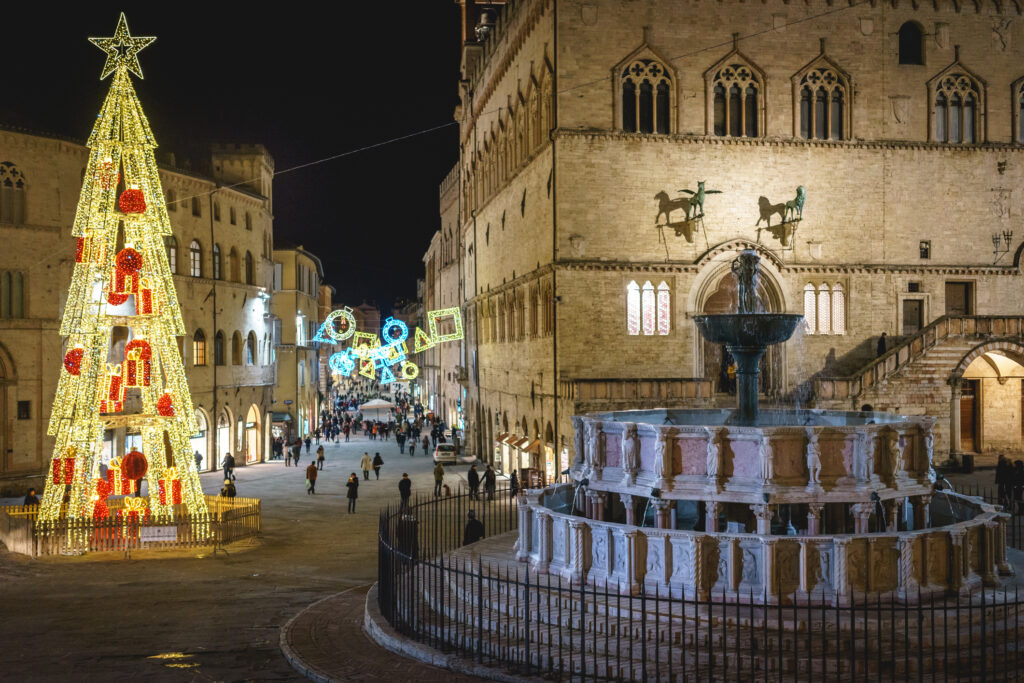
Picture credit: Paolo Paradiso
Assisi
Among the unmissable places to visit in Umbria is the city and birthplace of San Francesco, the patron saint of Italy, and Santa Chiara. If you read my previous blog post (click here), you know my deep love for this city. Assisi is a fascinating village that seems to live in a world of its own, separated from the clamor and chaos despite the numerous visitors. A kingdom of peace that can be perceived when walking through the city streets. It’s as if there is an impalpable sense of respectful silence, so much so that in some corners of the city, you almost feel like you should be whispering. Assisi attracts pilgrims from all over the world, and it will immerse you in an atmosphere of profound spirituality.
Assisi is a typically Umbrian city in terms of history and architectural development. What makes it truly unique are two main aspects that are inextricably linked: spirituality and the priceless artistic heritage scattered in the countless city churches. Regarding religious importance and ability to enchant the visitor, the most likely comparison is probably with Rome. In addition to the Basilica of San Francis, the others that, if time allows, are truly unmissable are the Temple of Minerva, the Cathedral of San Rufino, and, of course, the Basilica of Santa Chiara.
The Unique Porziuncola
But before arriving in the center of Assisi, a stop is obligatory at the Church of Santa Maria degli Angeli. It is the first original church of San Francesco. In fact, about halfway through the church, you can see the famous Porziuncola, the small and humble original church where the Franciscan friar began his preaching. As the Patron Saint of Animals, it’s not surprising to see on a statue of the Saint two turtle doves perched on his shoulders.
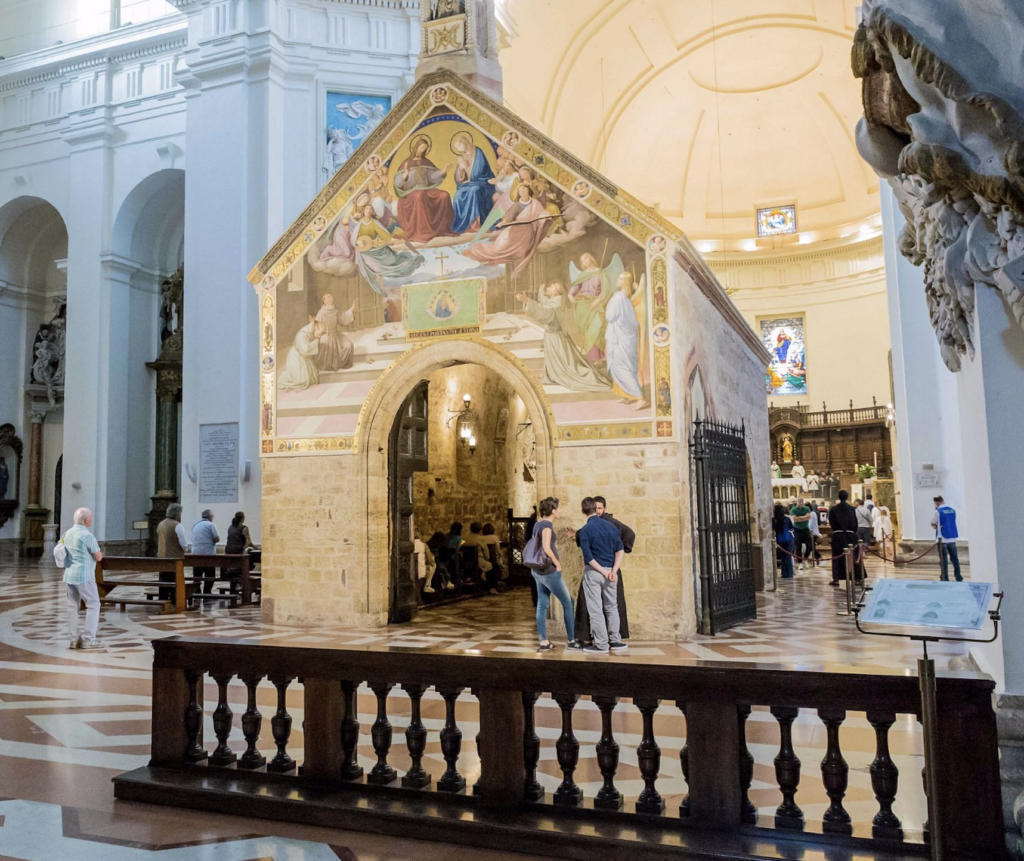
Picture credit: Alberto S.
But before arriving in the center of Assisi, a stop is obligatory at the Church of Santa Maria degli Angeli. It is the first original church of San Francesco. In fact, about halfway through the church, you can see the famous Porziuncola, the small and humble original church where the Franciscan friar began his preaching. As the Patron Saint of Animals, it’s not surprising to see on a statue of the Saint two turtle doves perched on his shoulders.
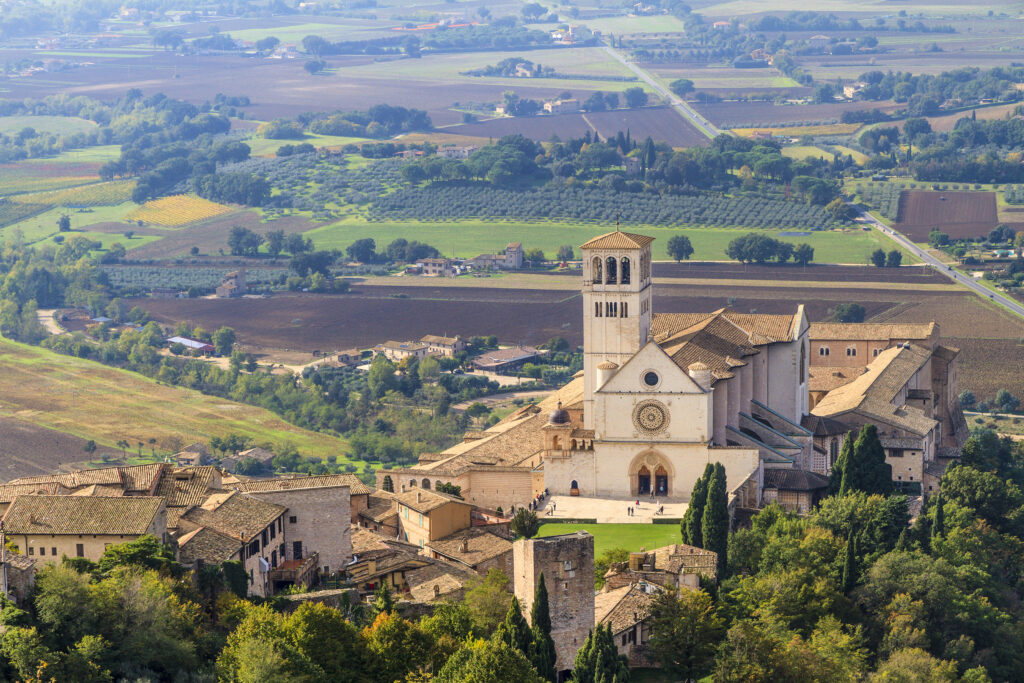
Picture credit: Orietta Gasperi.
Bevagna
Not as recognized as Perugia and Assisi, Bevagna is another enchanting town that anyone visiting Umbria should visit, thanks to its beauty. To discover this village, you enter and exit the city walls, strengthened by towers and fortresses, through the medieval gates that allow entry to the historic center, teeming with artisan shops and small trattorias in the alleys. Bevagna contains a Romanesque heart within its medieval walls, an excellent center, and everything to discover on foot. After entering through one of the ancient gates of Bevagna, start from the upper part of the city, where you can admire some Roman remains dating back to the 1st-2nd century AD. Reach the medieval Piazza Silvestri, which embraces some of the buildings and most important monuments of Bevagna.
A stop at the Church of San Michele is a must, even to just visit the large rose window. Stand on the staircase in front of the Torti Theatre, where you can enjoy the most beautiful view of the square. Other stops might include the Church of San Domenico and Giacomo, the Church of San Silvestro, the Roman column of San Rocco, and the beautiful 19th-century stone basin, from which birds fly at any hour. Another bonus is that Bevagna is flat, unlike some other Umbrian towns.
Among the other things to do in Bevagna is simply to take a lovely walk among the village’s shops and stop at the Bottega di Assù to taste some of the local delicacies, from croutons with livers to gnocchi with goose sauce and Montefalco wine. The village is known for eating well, enjoying many truffle dishes, olive oil from the mill, and delectable wines, including Sagrantino, which has always been cultivated in the territory.
Spello
To visit Umbria and discover its history, a stop in Spello, surrounded by Italy’s best-preserved Roman city walls, is an absolute must. Spello is an ancient medieval village where precious remains of the Roman era are preserved among winding alleys and stone houses, such as the city walls, the theatre’s remains, the amphitheater, and the baths. It is worth noting that Spello has been designated as one of the most beautiful villages in Italy. The Touring Club also awarded Spello an Orange Flag, a quality mark for art, nature, cuisine, hospitality, and culture.
To enter Spello, we must pass under one of the three city gates. Porta Consolare, with its medieval tower, Porta Venere, with the monumental Romanesque towers or Porta Urbica. Once inside, you can get lost among the medieval alleys, peek through the windows, and admire the stone balconies full of flowers. A walk in this splendid village is only made better by the scent of plants and flowers! It is no coincidence that every year the so-called infiorata of Spello takes place here, an event for Corpus Domini in which carpets and paintings are made of flower petals that look more like works of art than simple decorations.
Spello is also full of galleries and ceramists’ workshops, so take the opportunity to purchase local crafts.
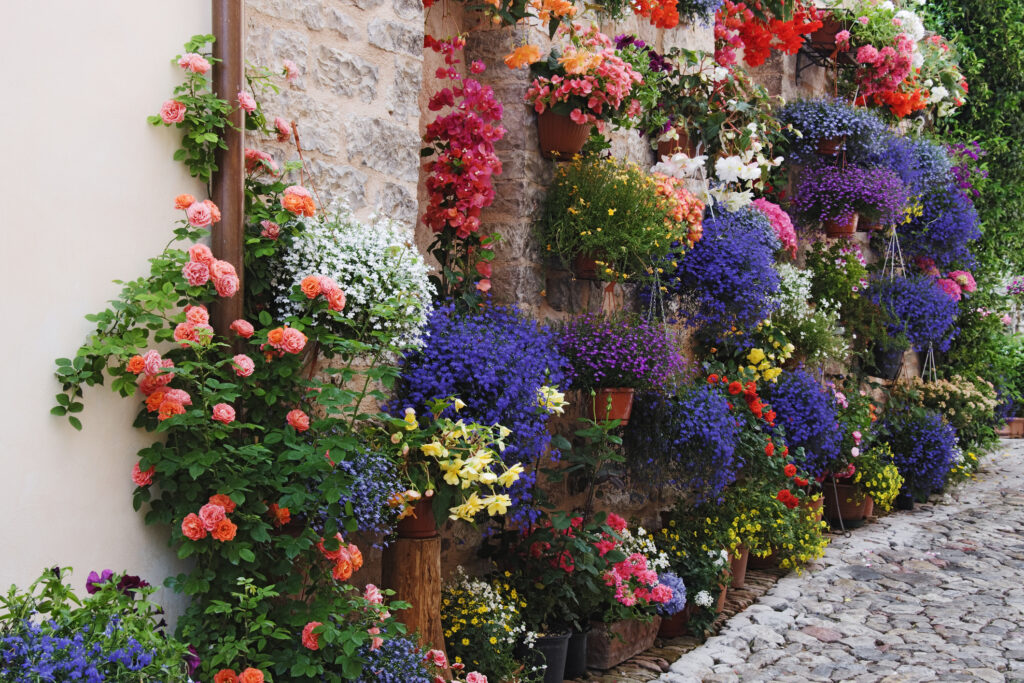
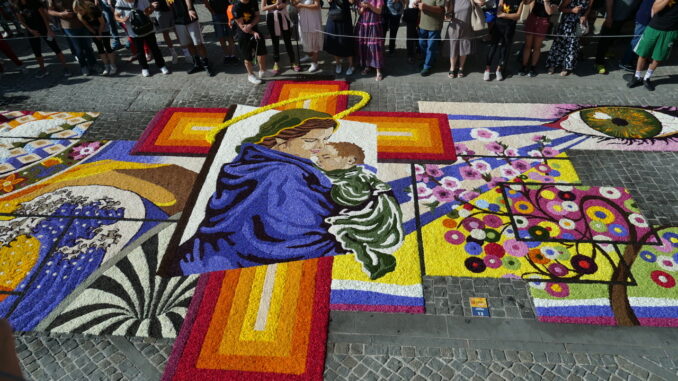
Picture credit: Spello Cannara.
Spoleto
While we’re in Umbria, making time for a stop in Spoleto is another must, and it will surely leave you breathless. Start from the main square overlooking the Spoleto Duomo and the main theatre. It will be here where you can take as many photos as possible from every corner. The Cathedral of Santa Maria Assunta, also known as the Duomo, is the most important church in Spoleto. Its construction dates back to the end of the 12th century. Still, the current internal structure in Baroque style results from the renovation requested in the 17th century by the future Pope Urban VIII, and completed at the end of the 18th century.
The city is located on Colle Sant’Elia and surrounded by woods, perfect for nature excursions and outdoor activities or just for strolling and taking in the fresh air. In this town, the Roman era meets the medieval one, blending into a lively and joyful unity.
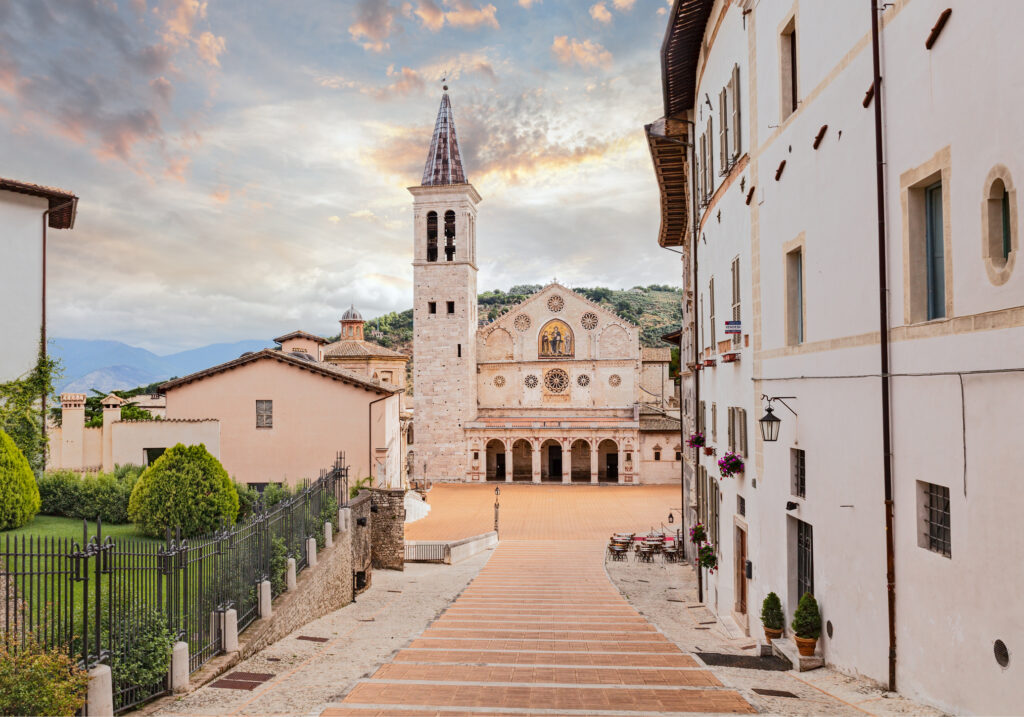
Lago Trasimeno
Lago Trasimeno is a true natural gem that offers an oasis of tranquility and scenic beauty. Its clear waters and green banks are surrounded by rolling hills, medieval villages, and nature reserves, creating a unique and fascinating environment. The fourth-largest lake in Italy, it is located in the heart of the Umbrian hills. With its large surface area and shallow depth, the lake lends itself well to water sports such as windsurfing, kitesurfing, sailing, and water skiing. And if watersports aren’t your thing, it’s lovely to sit back, and people-watch. On warmer days, it is also possible to take a dip in the lake.
The small and picturesque fishing village of Passignano sul Trasimeno is the main village on the lake’s northern shores of the same name. Leaving behind the stone alleys of the inland towns, here you can stroll along the lakeside and enjoy beach life, thanks to the various beaches that dot the banks. Along with Castiglione del Lago, Passignano is the best place to experience Trasimeno.
In spring and fall, the lake offers the perfect opportunity to sit back and relax calmly, allowing you to wander around the magnificent local villages. Depending on your mood at any given moment, you can sit on one of the many benches scattered all over the lake and enjoy a gelato, panino, or even a glass of red while overlooking the vast lake. While visiting Lago Trasimeno, you can take the boat to the two visitable islands, Isola Maggiore and Isola Polvese. The islands of Lake Trasimeno have been inhabited since ancient times.
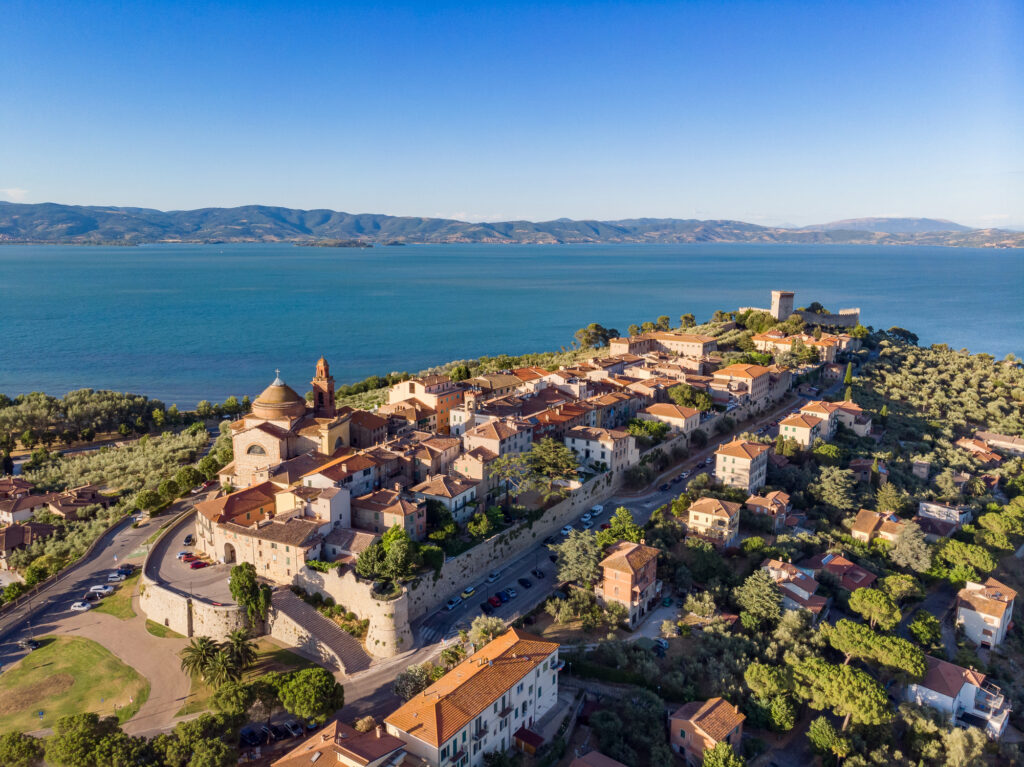
Montefalco
You will find Montefalco surrounded by medieval walls and dotted with olive trees and vineyards. Good food, excellent wine, and breathtaking views are the main ingredients that make up this Umbrian hamlet. Within its walls is space for high-level tastings, art viewings, and much more. Montefalco really is among the most beautiful villages in Italy. (And if I said this before of these Umbrian hamlets, it’s because they all fit this category.) Montefaclo is a hymn to the beauty of Umbria, among a thousand colors, scents, and flavors. It is no coincidence that Montefalco has been named the City of Wine, in honor of the local Sagrantino wine. And also named the City of Oil, among the typical products that are worth the trip to Montefalco.
The most beautiful thing about a visit to Montefalco is driving on “Sagrantino Road.” Lined with many estates and hills dotted with rows of vineyards and savoring all the local wine production in one of the historic cellars or small family-run farmhouses scattered among the greenery. After a delicious winetasting and lunch, head towards the town’s main square, which is a real open-air theater. The Piazza del Comune is a large square around which 16th-century noble palaces and churches stand out. It is full of cafés and restaurants with outdoor tables and colorful umbrellas under which you can find more delicious food and wine!
After some fueling, walk along the street of shops, Corso Mameli, for tasty souvenirs, from truffles to fruity olive oil. Stop for a visit in the Church of Sant’Agostino, and don’t miss the Church and museum complex of San Francesco, built in the 14th century, unmissable due to the 12 scenes from the life of Saint Francis, frescoed by Benozzo Gozzoli.
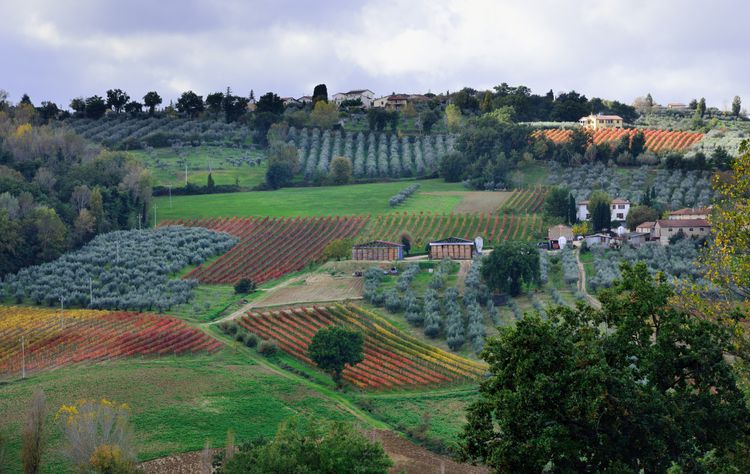
Eating In Umbria
Umbrian cuisine is predominantly land-based and offers visitors numerous meat and cold cut dishes to enjoy. The antipasto is a composition of the best-cured meats and cheeses in the region. As for other first courses, you can try the strangozzi, a pasta similar to tagliatelle but without egg, and the umbricelli, rustic durum wheat spaghetti.
Among the other Umbrian specialties not to be missed are the cannara onion and the green beans from Lake Trasimeno. Among the desserts, however, St. Joseph’s pancakes, sweet potato donuts, Terni pampepato and nociata, a sort of nougat made with walnuts are worth their calories.
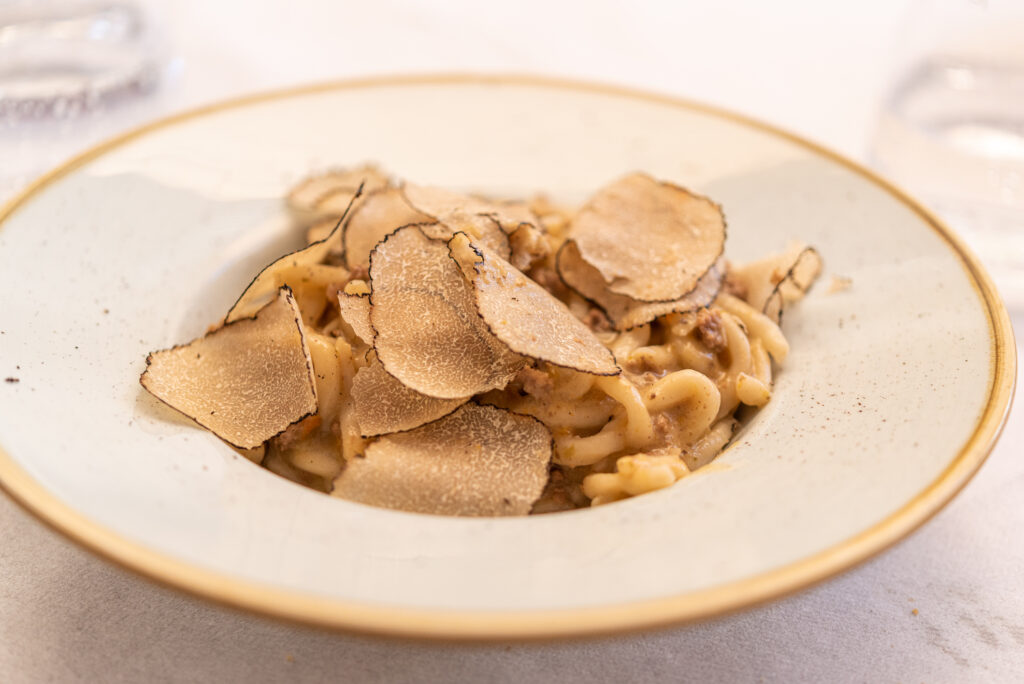
What do These Towns Have in Common Aside their Beauty?
So are you ready to make Umbria your next Italian destination? If so, stay tuned for a special announcement!

What to Pack for Italy
Cosa Mettere in Valigia per l'Italia
Everyone is always asking me what they should pack for Italy,
so I’ve created a quick reference guide that you can use for your next trip.
Hint: You don’t need nearly as much as you think you do!

Leave a Reply